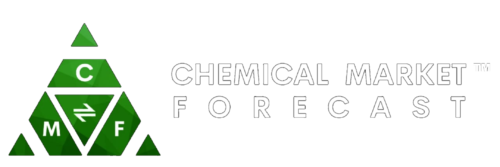Fullerene Market Report
Fullerenes are a class of carbon allotropes that have recently gained significant attention in the materials science and nanotechnology industries. These molecules consist of carbon atoms arranged in a unique and highly symmetrical manner, forming a hollow sphere or cylindrical shape. The most well-known fullerene is C60, also known as Buckminsterfullerene, named after architect Richard Buckminster Fuller, who designed geodesic domes with similar structures.
The fullerene market has experienced significant growth in recent years due to the potential applications of these unique molecules. Fullerenes have a wide range of properties, including high thermal and electrical conductivity, high tensile strength, and excellent chemical stability, making them ideal for a variety of industrial applications.
One of the most promising applications of fullerenes is in the field of medicine. Fullerene-based compounds have been shown to have excellent antioxidant properties, which can be useful in the treatment of various diseases caused by oxidative stress, such as Alzheimer’s disease and cancer. Additionally, fullerenes have shown potential as drug delivery systems due to their unique hollow structure, which can be filled with therapeutic compounds and targeted to specific tissues.
The use of fullerenes in the electronics industry is also growing rapidly. Fullerene-based compounds have been used to create high-performance organic photovoltaic cells, which convert light into electricity. Fullerenes are also being studied for use in organic light-emitting diodes (OLEDs), which have potential applications in displays and lighting.
In the energy industry, fullerenes are being studied for use in hydrogen fuel cells. Fullerenes can act as catalysts for the oxidation and reduction reactions that take place in fuel cells, improving their efficiency and making them more cost-effective.
The fullerene market is segmented into several categories, including type, application, and region. The most common types of fullerenes include C60, C70, and C84, although other variants are also available. Applications for fullerenes include medicine, electronics, energy, and others.
Geographically, the fullerene market is divided into several regions, including North America, Europe, Asia-Pacific, Latin America, and the Middle East and Africa. Asia-Pacific is the largest market for fullerenes, accounting for over 40% of the global market share. This is due to the region’s growing electronics and energy industries, as well as the increasing demand for fullerene-based compounds in the medical field.
North America and Europe are also significant markets for fullerenes, with the United States and Germany being the largest consumers of these molecules in their respective regions. The growth of the fullerene market in these regions is driven by the increasing demand for high-performance materials in various industries.
The fullerene market is highly competitive, with several key players dominating the industry. These include Mitsubishi Chemical Corporation, Nano-C Inc., and BuckyUSA Inc. These companies are constantly innovating and developing new fullerene-based products to meet the growing demand in various industries.
In conclusion, the fullerene market is a rapidly growing industry that is poised for significant growth in the coming years. The unique properties of fullerenes make them ideal for a variety of industrial applications, including medicine, electronics, and energy. As research into the applications of fullerenes continues to advance, it is likely that their use will become even more widespread in various industries, further driving the growth of the fullerene market.
TABLE OF CONTENT
Global Fullerene Market Report
1 Market Introduction of Global Fullerene Market Report
2 Market Segmentation of Fullerene Market Report
2.1 Fullerene Market Segmentation By Region
2.2 Fullerene Market Segmentation By Type
2.3 Fullerene Market Segmentation By Crop Type
3 Cost Structure of Fullerene Market Report
4 Country Analysis of Fullerene Market Report
4.1 China
4.1.1 Fullerene Market Forecast & Size in China
4.1.2 Fullerene Market Trends & Analysis in China
4.1.3 Key Fullerene companies in China
4.1.4 Regulatory Framework of Fullerene Market in China
4.2 Germany
4.2.1 Fullerene Market Size in Germany
4.2.2 Fullerene Market Trends & Analysis in Germany
4.2.3 Key Fullerene companies in Germany
4.2.4 Regulatory Framework of Fullerene Market in Germany
4.3 France
4.3.1 Fullerene Market Size in France
4.3.2 Fullerene Market Trends & Analysis in France
4.3.3 Key Fullerene companies in France
4.3.4 Regulatory Framework of Fullerene Market in France
4.4 Italy
4.4.1 Fullerene Market Size in Italy
4.4.2 Fullerene Market Trends & Analysis in Italy
4.4.3 Key Fullerene companies in Italy
4.4.4 Regulatory Framework of Fullerene Market in Italy
4.5 Netherland
4.5.1 Fullerene Market Size in Netherland
4.5.2 Fullerene Market Trends & Analysis in Netherland
4.5.3 Key Fullerene companies in Netherland
4.5.4 Regulatory Framework of Fullerene Market in Netherland
4.6 Russia
4.6.1 Fullerene Market Size in Russia
4.6.2 Fullerene Market Trends & Analysis in Russia
4.6.3 Key Fullerene companies in Russia
4.6.4 Regulatory Framework of Fullerene Market in Russia
4.7 Canada
4.7.1 Fullerene Market Size in Canada
4.7.2 Fullerene Market Trends & Analysis in Canada
4.7.3 Key Fullerene companies in Canada
4.7.4 Regulatory Framework of Fullerene Market in Canada
4.8 Mexico
4.8.1 Fullerene Market Size in Mexico
4.8.2 Fullerene Market Trends & Analysis in Mexico
4.8.3 Key Fullerene companies in Mexico
4.8.4 Regulatory Framework of Fullerene Market in Mexico
4.9 Singapore
4.9.1 Fullerene Market Size in Singapore
4.9.2 Fullerene Market Trends & Analysis in Singapore
4.9.3 Key Fullerene companies in Singapore
4.9.4 Regulatory Framework of Fullerene Market in Singapore
4.10 United Kingdom
4.10.1 Fullerene Market Size in United Kingdom
4.10.2 Fullerene Market Trends & Analysis in United Kingdom
4.10.3 Key Fullerene companies in United Kingdom
4.10.4 Regulatory Framework of Fullerene Market in United Kingdom
4.11 Switzerland
4.11.1 Market Size in Switzerland
4.11.2 Market Trends & Analysis in Switzerland
4.11.3 Key Fullerene companies in Switzerland
4.11.4 Regulatory Framework of Fullerene Market in Switzerland
4.12 Brazil
4.12.1 Market Size in Brazil
4.12.2 Market Trends & Analysis in Brazil
4.12.3 Key Fullerene companies in Brazil
4.12.4 Regulatory Framework of Fullerene Market in Brazil
4.13 USA
4.13.1 Market Size in US
4.13.2 Market Trends & Analysis in US
4.13.3 Key Fullerene companies in US
4.13.4 Regulatory Framework of Fullerene Market in US
4.14 Japan
4.14.1 Market Size in Japan
4.14.2 Market Trends & Analysis in Japan
4.14.3 Key Fullerene companies in Japan
4.14.4 Regulatory Framework of Fullerene Market in Japan
4.15 South Korea
4.15.1 Market Size in South Korea
4.15.2 Market Trends & Analysis in South Korea
4.15.3 Key Fullerene companies in South Korea
4.15.4 Regulatory Framework of Fullerene Market in South Korea
4.16 India
4.16.1 Market Size in India
4.16.2 Market Trends & Analysis in India
4.16.3 Key Fullerene companies in India
4.16.4 Regulatory Framework of Fullerene Market in India
4.17 Thailand
4.17.1 Market Size in Thailand
4.17.2 Market Trends & Analysis in Thailand
4.17.3 Key Fullerene companies in Thailand
4.17.4 Regulatory Framework of Fullerene Market in Thailand
4.18 Russia
4.18.1 Market Size in Russia
4.18.2 Market Trends & Analysis in Russia
4.18.3 Key Fullerene companies in Russia
4.18.4 Regulatory Framework of Fullerene Market in Russia
4.19 Malaysia
4.19.1 Market Size in Malaysia
4.19.2 Market Trends & Analysis in Malaysia
4.19.3 Key Fullerene companies in Malaysia
4.19.4 Regulatory Framework of Fullerene Market in Malaysia
4.20 Saudi Arabia
4.20.1 Market Size in Saudi Arabia
4.20.2 Market Trends & Analysis in Saudi Arabia
4.20.3 Key Fullerene companies in Saudi Arabia
4.20.4 Regulatory Framework of Fullerene Market in Saudi Arabia
5 Global Fullerene Market Trends
5.1 Fullerene Market Trends- Key Drivers
5.2 Fullerene Market Trends- Key Restraints
5.3 Fullerene Market Trends- Key Challenges
5.4 Porter’s Five Forces Analysis of Fullerene Market
5.5 PEST Analysis- Fullerene Market
6 Global Fullerene Market Forecast
6.1 Global Fullerene Market Forecast By Region
6.1.1 North America
6.1.2 Europe
6.1.3 APAC
6.1.4 Middle East
6.1.5 ROW
6.2 Global Composites Market Forecast By Type
6.2.1 Fertilizer
6.2.2 Pesticide
6.3 Global Fullerene Market Forecast By Crop Type
6.3.1 Fruits & Vegetables
6.3.2 Oilseed and Pulses
6.3.3 Cereals & Grains
6.3.4 Other
7 Supply Chain of the Fullerene Market Analysis
8 Opportunity Analysis
9 Scenario Analysis
10 Key Company Profiles
11 Strategic Conclusions – Fullerene Market Report
12 Abbreviations used in Fullerene Market Report






Reviews
There are no reviews yet.